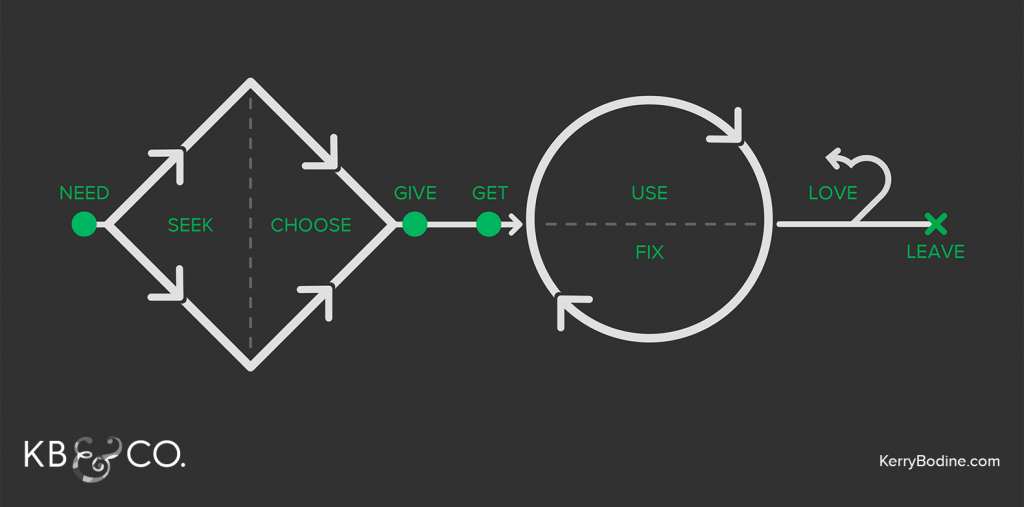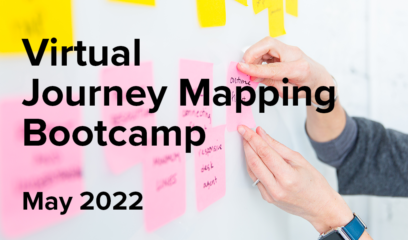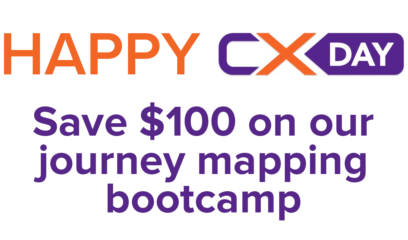When I bumped into a former colleague at a recent conference, he was eager to chat about a journey mapping initiative his organization (a major financial services provider) was kicking off. But I got a blank look when I asked what journeys his team planned to focus on. “We were going to do the whole lifecycle,” he told me. “We want to map from the awareness phase all the way through retention and loyalty.”
That boil-the-ocean approach is common, but problematic. A customer journey is related to—but is not the same thing as—a customer lifecycle. Here are two main differences:
Customer journeys align with your customers’ goals or tasks. Lifecycles don’t.
No prospective customer wants “awareness” of any company (and let’s be honest, they’re not thinking of how best to solidify their “retention” either). Instead, they want to accomplish a goal or task—and working with your organization is simply the way to do that.
If you’re a business-to-consumer (B2C) organization, your customers might be trying to get insurance for the used car they’ve just purchased, book a vacation to Maui, or file their taxes. These goals align to the items on their mental to-do lists or arise when some life event (like an invitation to a wedding) triggers a need.
If you’re a business-to-business (B2B) organization, your customers also have goals and tasks—they just look a little different. I’m in charge of finding a company who can manage our support calls. I need to purchase an MRI machine for the hospital. It’s time to get our restaurant refrigeration equipment serviced. But just as with B2C, these goals and tasks are on your customers’ to-do lists. They’re what your customers are thinking about as they commute into the office—or what their managers unexpectedly drop on their plates.
In either case, your customers do NOT have a goal of going through your entire customer lifecycle. Their real-world goals only align to a few of the phases in the archetypal customer journey shown above.
Of course, there are isolated cases in which customers might complete every phase show above as part of single journey. For example, someone might decide they want to dine out that evening, decide on a restaurant, go there and eat, pay, and then go home. They may even resolve a problem with their bill and sign up for that restaurant’s loyalty program during that visit. But this is the exception to the rule. Your customers’ journeys will almost never span every phase.
Customer journeys have a defined beginning and an end. Lifecycles don’t.
One of the most seductively dangerous aspects of the customer lifecycle is the idea that it’s never-ending—a notion that’s reinforced in the very word “lifecycle.” Many companies use those ubiquitous circle graphics (and occasional infinity symbols) to depict this framework because they don’t want to admit that their customers will ever leave. And, in turn, that their journeys will end.
But when your customers complete their goal or task, that journey is over. They’ve gotten their auto insurance or procured their MRI machine. That doesn’t mean they won’t have more interactions with your organization (like resolving a billing issue or scheduling maintenance for that MRI), but those interactions will be part of a different journey. (And in the case of B2B organizations, these journeys may even be undertaken by a different persona.)
Even a long, amorphous journey like saving for retirement has an end. Sure, the journey might last 40 years or longer. But your customer may finally decide she has enough money to retire and stop saving, or—bear with me as I get a bit dark—she may die before she reaches this point. Both are journey endings that an investment firm should understand and plan for.
Still want to map every single phase that customers go through?
Resist the urge! Why? Because unlike separate journey maps that align to specific (and finite) customer goals or tasks, a single map that shows customers’ entire relationship with your organization is likely be either VERY long or at such a high level that it won’t be actionable. And creating the map is only Step 3 in our five-step process for journey mapping—it’s how you use the map to improve your customers’ experiences and drive organizational change that really counts.




